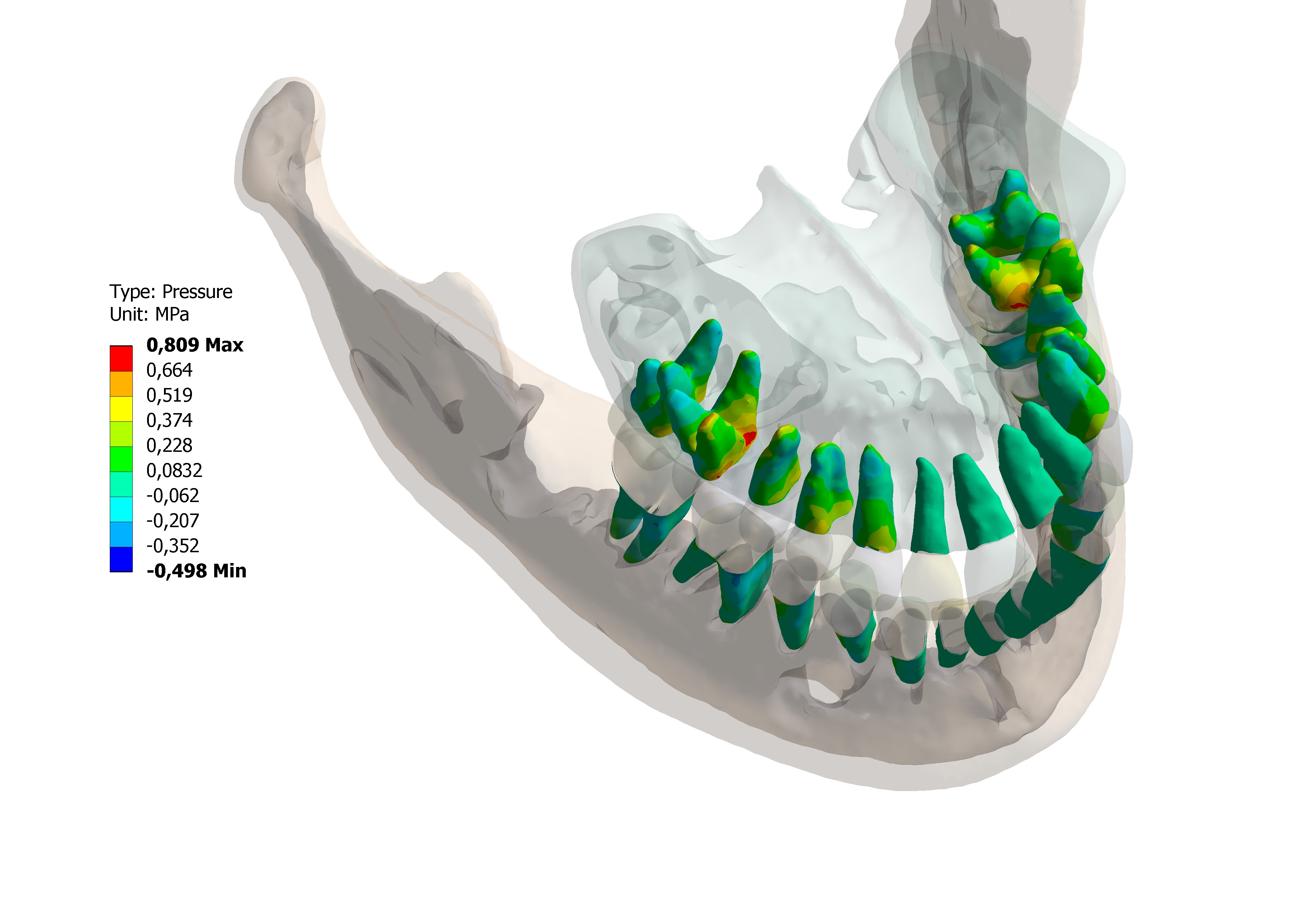IADR Abstract Archives
Functional Load Capacity of Periodontal Ligament Under Realistic Boundary Conditions: A Finite Element Analysis
Objectives: The purpose of this study was to investigate the functional load capacity of the periodontal ligament in a full arch maxilla and mandible model using numerical simulation. Additionally, the functional load pattern in multi- and single rooted teeth with full periodontal support was analyzed.
Methods: High resultion CT data was used to create 3D-models of single- and multi-rooted teeth. [MM1] [MM2] For a precise description of the surfaces of each structure (enamel, dentin, cementum, pulp, PDL, gingiva, bone), each tooth was segmented separately and biomechanical characteristics were assigned. Finite-Element-Analysis (FEA) software was used to compute the biomechanical behavior of a step-wise increased force to 700N in cranial and 350N in the ventral direction of the Masseter muscle’s approach. Quantitative (pressure, tension, and deformation) and qualitative (color-coded images) data were recorded and descriptive analyzed.
Results: The teeth with the highest load capacities were the upper and lower molars (0.4-0.6 MPa), followed by the premolars (0.4-0.5 MPa) and canines (0.3-0.4 MPa) under vertical occlusal loading. Qualitative data showed (fig. 1) that the area with the highest stress in the PDL was the cervical region for single rooted teeth and the furcation area, particularly the furcation roof in molars.
Conclusions: Cervical areas as well as the furcation roof are the zones with the highest functional stress. These preliminary results may confirm the susceptibility of the molar furcation area which has always been a challenge in periodontal therapy. Further studies should investigate the effect of periodontal attachment loss on the load capacity.
Methods: High resultion CT data was used to create 3D-models of single- and multi-rooted teeth. [MM1] [MM2] For a precise description of the surfaces of each structure (enamel, dentin, cementum, pulp, PDL, gingiva, bone), each tooth was segmented separately and biomechanical characteristics were assigned. Finite-Element-Analysis (FEA) software was used to compute the biomechanical behavior of a step-wise increased force to 700N in cranial and 350N in the ventral direction of the Masseter muscle’s approach. Quantitative (pressure, tension, and deformation) and qualitative (color-coded images) data were recorded and descriptive analyzed.
Results: The teeth with the highest load capacities were the upper and lower molars (0.4-0.6 MPa), followed by the premolars (0.4-0.5 MPa) and canines (0.3-0.4 MPa) under vertical occlusal loading. Qualitative data showed (fig. 1) that the area with the highest stress in the PDL was the cervical region for single rooted teeth and the furcation area, particularly the furcation roof in molars.
Conclusions: Cervical areas as well as the furcation roof are the zones with the highest functional stress. These preliminary results may confirm the susceptibility of the molar furcation area which has always been a challenge in periodontal therapy. Further studies should investigate the effect of periodontal attachment loss on the load capacity.

